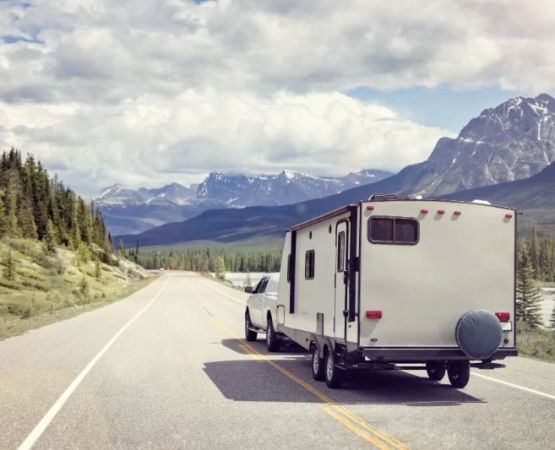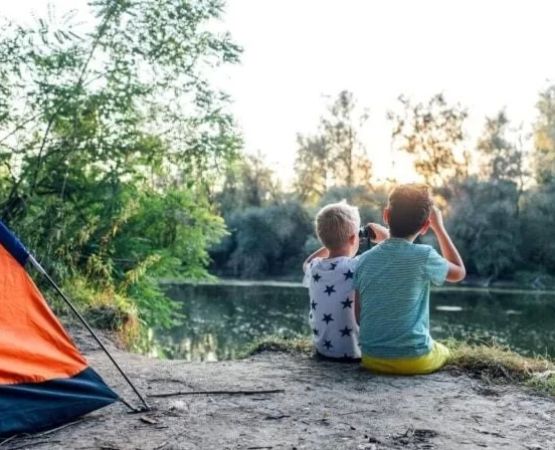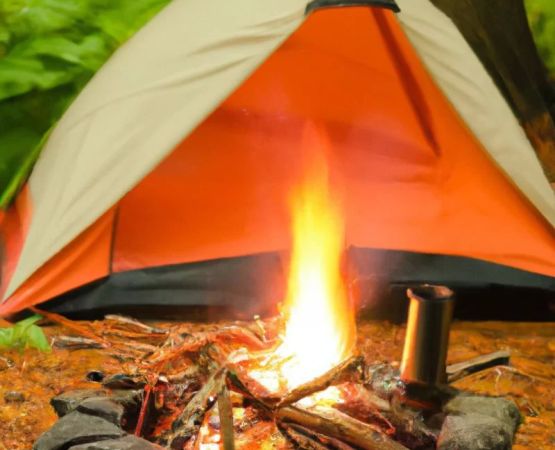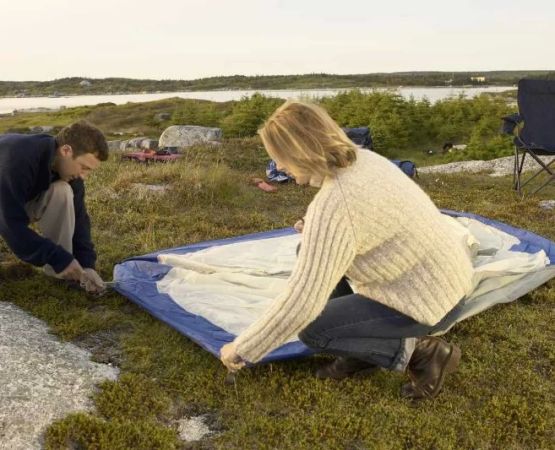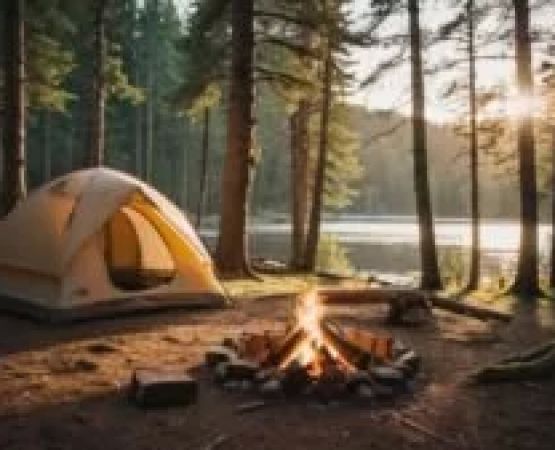Essential Camping Gear for Cold Weather Adventures
- Why Cold Weather Camping is an Unforgettable Experience
- Choosing the Right Sleeping Bag for Cold Weather
- Layering Your Clothing for Winter Camping
- Picking the Perfect Tent for Winter Camping
- Winter Camping Cooking Gear
- Keeping Warm While Camping in Cold Weather
1. Why Cold Weather Camping is an Unforgettable Experience
Camping in cold weather offers a unique experience that many outdoor enthusiasts find exhilarating. While summer camping can be relaxing, there’s something special about the crisp air, the serene winter landscapes, and the quiet of the outdoors in colder months. Snow-capped mountains, frozen lakes, and fewer crowds give winter campers the chance to truly connect with nature.
vbnet复制But with this unique experience comes the challenge of cold temperatures. It’s essential to come prepared with the right camping gear for cold weather to stay safe and comfortable. This is where proper planning and the right equipment come in—ensuring you enjoy your winter adventure instead of enduring it. The right gear can make the difference between a memorable trip and a miserable one.
Whether you’re heading to the mountains for a ski trip, camping near a frozen lake, or enjoying the winter wilderness, being well-prepared for the cold is key. Let's explore the essentials of cold weather camping gear that will make your outdoor experience a success.
2. Choosing the Right Sleeping Bag for Cold Weather
The sleeping bag is one of the most important pieces of gear when it comes to winter camping. In cold weather, your sleeping bag needs to provide adequate insulation to keep you warm throughout the night. Choosing the right sleeping bag involves understanding temperature ratings, insulation types, and your own comfort preferences.
css复制2.1 Temperature Ratings
When selecting a sleeping bag for cold weather, it’s crucial to check the temperature rating. These ratings indicate the lowest temperature at which the sleeping bag will keep you warm. For winter camping, look for a sleeping bag rated for at least 20°F (-6°C), but for more extreme cold, consider bags rated for 0°F (-18°C) or lower.
2.2 Insulation Type
Sleeping bags come with different types of insulation, with down and synthetic being the most common. Down insulation is lightweight and provides excellent warmth-to-weight ratio, but it can lose its insulating properties when wet. Synthetic insulation, on the other hand, retains warmth even when damp and is often more affordable, but it may be heavier than down. Depending on your location and the forecast, you can decide which type best suits your needs.
2.3 Fit and Comfort
A well-fitting sleeping bag will reduce heat loss by trapping warmth near your body. When shopping for a sleeping bag, consider your height, body shape, and how much room you prefer inside your bag. A mummy-style sleeping bag is ideal for colder temperatures because it hugs your body, reducing cold air pockets.
3. Layering Your Clothing for Winter Camping
Proper clothing is key to staying warm while camping in cold weather. Layering is a technique that involves wearing several layers of clothing to trap heat and provide insulation. This method is far more effective than relying on a single thick layer of clothing, as it allows you to regulate your body temperature more easily as conditions change.
pgsql复制3.1 Base Layer: Moisture Wicking
Your base layer should be made of moisture-wicking material, such as merino wool or synthetic fabrics, which draw sweat away from your skin. Keeping dry is essential in cold weather, as wet skin can quickly lead to hypothermia. Avoid cotton, as it retains moisture and loses its insulating properties when wet.
3.2 Insulating Layer: Retaining Heat
The insulating layer is designed to trap the heat your body generates. Fleece and down jackets are common options, offering lightweight insulation without compromising on warmth. For extra cold conditions, layering multiple pieces of insulation, such as a fleece jacket under a down vest, can help regulate your body heat.
3.3 Outer Layer: Protection from Wind and Water
Your outer layer should be a waterproof and windproof jacket and pants, such as those made from Gore-Tex or other durable materials. This layer protects against the elements while allowing moisture from your body to escape. Remember, wind and water are your worst enemies when it comes to staying warm.
4. Picking the Perfect Tent for Winter Camping
Your tent is your shelter from the cold, so it’s important to choose one designed for winter conditions. Not all tents are created equal, and winter camping requires a different type of tent compared to summer camping. Winter tents are built to handle snow accumulation, high winds, and freezing temperatures.
vbnet复制4.1 Four-Season Tents
For winter camping, opt for a four-season tent, which is designed to withstand harsh conditions. These tents are generally sturdier, with reinforced poles and weatherproof materials that can handle snow and wind. Look for a tent that offers sufficient ventilation to reduce condensation buildup, which can make the inside of the tent cold and damp.
4.2 Size and Weight
Consider the size and weight of the tent depending on how much gear you need to store. A four-person tent may provide more comfort and space but will also be bulkier to carry. If you're camping solo or with a partner, a smaller tent may suffice and be more efficient for winter camping.
5. Winter Camping Cooking Gear
Cooking in cold weather requires specialized gear to ensure that your food stays warm and your stove operates efficiently. The colder temperatures can affect the performance of your stove, so it's essential to bring equipment designed for winter camping.
pgsql复制5.1 Stoves for Cold Weather
Choose a stove that performs well in low temperatures. Liquid fuel stoves tend to work better in winter, as they can be used at lower temperatures than canister stoves. Make sure your stove is equipped with a windscreen to protect the flame from gusts of wind and keep your fuel consumption to a minimum.
5.2 Cooking in Cold Conditions
Cooking in cold weather requires more preparation. Make sure to bring easy-to-cook meals that can be prepared quickly. Soups, stews, and freeze-dried meals are excellent choices that provide warmth and energy. Additionally, carry extra fuel and make sure your food storage is insulated to prevent it from freezing.
6. Keeping Warm While Camping in Cold Weather
Staying warm while camping in cold weather is essential to your safety and comfort. Besides layering clothing and having a quality sleeping bag, there are other strategies to help retain body heat.
css复制6.1 Heat Packs and Insulation
Hand warmers, heat packs, and sleeping pads with built-in insulation can add an extra layer of warmth. Sleeping pads designed for winter camping provide insulation from the cold ground, which can draw heat away from your body while you sleep.
6.2 Keep Your Tent Dry
Moisture inside the tent can quickly make it feel much colder. Make sure to dry your tent and gear regularly, and ensure that the tent is adequately ventilated to prevent condensation from building up. Keeping the interior of your tent dry will help you stay warmer.


